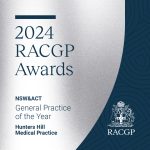Bone Mineral Density (BMD) screening of HHMP patients for Osteoporosis
Recently HHMP in partnership with Osteoporosis Solutions Australia completed screening of over 170 at risk patients at HHMP. This is an impressive achievement for a 1 week program focused on 1 general practice. Multiple patients with previously undiagnosed osteoporosis have been identified and can now receive appropriate treatment hopefully preventing them from having serious fractures in the future.
What is Osteoporosis
An international consensus definition states: “Osteoporosis is a systemic skeletal disease characterised by low bone mass and micro architectural deterioration of bone tissue, with a consequent increase in bone fragility and susceptibility to fracture”
The most common reasons for osteoporosis in older women are:
- menopause leading to rapid bone breakdown,
- impaired intake and absorption of calcium and vitamin D leading to increased age related bone loss
- decreased physical activity with increasing age
Bone loss in men is in part due to the causes outlined in b) and c) above.
Secondary osteoporosis is a reduced bone mass caused by conditions other than age. Such conditions can include but are not limited to: anorexia, diabetes, hormone disorders, alcoholism, liver problems, gastric disease, vitamin D deficiency, malabsorption, various medications such as corticosteroids, Crohn’s disease, multiple myeloma and many more.
The World Health Organisation has further defined osteoporosis according to the T-scores from a DEXA assessment for post menopausal women.
Normal bone mass is defined as any BMD that is greater than one standard deviation below the young adult mean. (T-score > -1)
Reduced bone mass (osteopenia) is defined as any BMD between one and two and a half standard deviations below the young adult mean. (-1.0 > T-score > -2.5)
Osteoporosis is defined as any BMD less than two and a half standard deviations below the young adult mean. (T-score < -2.5)
What is DEXA Bone Mineral Density (BMD) scans
The DEXA assessment measures at least two skeletal sites such as the lumbar spine and the femoral neck regions. Occasionally the forearm is also tested if one of the other two sites cannot due to hip replacement or excessive spinal deformities.
What are the treatment options for Osteoporosis
Several treatment options are available for osteoporosis. These include lifestyle and medication options. If there is a medical cause for the osteoporosis eg: a medical conditions such as hormone issues fixing these is the first step. After that multiple oral and injectable medication options are available and may include calcium, vitamin D and anti-resorptive medications.
How does HHMP support patients with osteoporosis
- Doctors working at HHMP are aware of bone health and the problems that can be caused by bone loss and falls
- Monitoring for conditions such as hypothyroid and medications such as corticosteroids that can cause bone loss
- Patients are often screened during health checks and if appropriate referred for blood tests and BMD scanning
- Bi-annual BMD scanning is done on-site at HHMP to try and catch any patients that may have missed being checked
- Encouraging appropriate use of Calcium nd Vitamin D
- Having appropriate recall systems for patients needing injectable medications
- Utilising nursing staff and the care coordinator to provide patient education and followup
The Multidisciplinary team available at HHMP to support patients at risk of falls and fractures
- GPs – all can help with screening and general advice
- Registered Nurses – help with recalls for injectable medications and administration of medications
- Care coordinator – to educate patients and complete health assessments and care plans
- Endocrinologists – to help identify more complex medical and hormone issues such as parathyroid conditions and offer medical treatments for these
- Dietitian – to help with appropriate food intake including calcium and vitamin D
- Physiotherapists to help with strength, conditioning, balance and falls prevention
- Podiatrists to help with appropriate shoes selection and preventions of slips and falls






